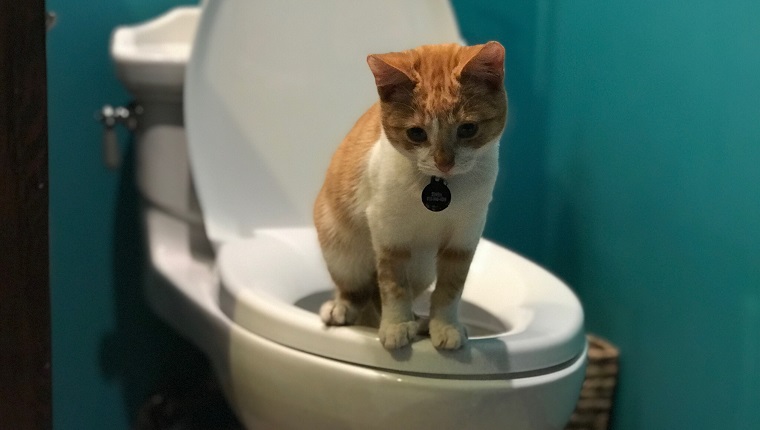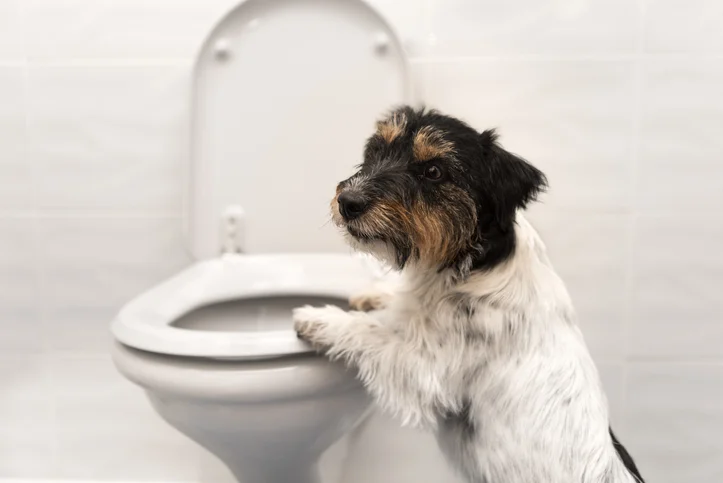Your Hazards of Animal Waste in the Toilet
Your Hazards of Animal Waste in the Toilet
Blog Article
This article down the page pertaining to 10 Things You Should Never Flush Down The Toilet is highly enjoyable. You should see for yourself.

When it concerns throwing away waste, specifically animal waste, many individuals usually turn to the convenient choice of flushing it down the toilet. However, this apparently very easy service can have major repercussions for the atmosphere and public health. In this post, we'll check out why flushing pet waste down the commode is a poor idea and offer alternative approaches for correct disposal.
Intro
Correct waste disposal is critical for keeping environmental sustainability and public health. While it might appear safe to purge animal waste down the bathroom, it can cause various issues, both for the environment and human health.
Dangers of flushing animal waste
Ecological impact
Purging animal waste presents harmful germs and microorganisms right into rivers, which can adversely impact marine environments. These microorganisms can infect water resources and harm marine life, interrupting delicate ecological communities.
Public health worries
Animal waste consists of damaging germs such as E. coli and Salmonella, which can posture serious health threats to human beings. Purging animal waste down the bathroom can pollute water materials, causing the spread of conditions and infections.
Alternatives to flushing
As opposed to flushing animal waste down the commode, there are a number of alternate disposal methods that are much more environmentally friendly and hygienic.
Composting
Composting pet waste is a green way to deal with it. By composting, raw material is broken down right into nutrient-rich dirt, which can be utilized to feed yards and plants.
Landfill disposal
Dealing with animal waste in a landfill is an additional option. While not as eco-friendly as composting, it is a more secure alternative to flushing, as it prevents the contamination of water sources.
Animal waste disposal systems
There are specific pet dog waste disposal systems available that securely and hygienically deal with pet waste. These systems commonly make use of enzymes to break down waste and remove odors.
Actions to appropriate animal garbage disposal
To make certain proper disposal of animal waste, adhere to these steps:
Scooping and getting waste
Consistently scoop and bag animal waste using eco-friendly bags. This protects against waste from contaminating the setting.
Using marked waste bins
Dispose of bagged animal waste in marked waste containers, such as garden compost bins or landfill containers. Stay clear of flushing it down the toilet whatsoever costs.
Cleaning litter boxes and pet dog areas frequently
Consistently clean litter boxes and pet dog locations to prevent the buildup of waste and bacteria. Use pet-safe cleansing products to preserve health.
Advantages of correct disposal approaches
Embracing correct disposal methods for pet waste provides a number of benefits:
Minimized environmental pollution
Appropriate disposal techniques lower the threat of environmental pollution, securing rivers and ecosystems from contamination
Minimized threat of water contamination.
By staying clear of flushing animal waste down the bathroom, the danger of water contamination is considerably lowered, safeguarding public health.
Boosted hygiene and hygiene
Proper disposal techniques promote much better hygiene and hygiene, producing a safer atmosphere for both human beings and pets.
Conclusion
In conclusion, flushing animal waste down the commode is damaging to the atmosphere and public health. By adopting different disposal methods and complying with correct waste monitoring methods, we can decrease the negative influence of pet waste and add to a cleaner, healthier world.
What To Do With Dog Poo – The Do's And Don'ts Of Disposing Of Faeces
Dog poo bins
Some councils provide dedicated dog waste bins in popular dog-walking areas that can take dog poo that has been bagged but you can legally dispose of dog waste in any public litter bin, as long as it is securely bagged. This also applies to your wheelie bin at home.
Do not flush
Water companies do not recommend flushing dog faeces down the toilet because certain parasites can survive the water processing treatment and are potentially harmful to humans. You should also never consider flushing dog poo that has been bagged down the toilet as the bags will not break down and instead create severe blockages in the sewage system.
In the woods
The Forestry Commission promotes a ‘stick and flick’ method for dealing with waste in the woods. This means finding a stick and using it to flick any poo from off the path so that it is out of the way of other walkers. You could also bury it as long as it is not in an area where there might be livestock.
Livestock
Parasites found in dog poo can be transmitted to livestock if they inadvertently eat infected faeces that has been left on grazing land. This could result in the death of sheep or abortion in cattle so you should always make sure you pick up your dog’s waste in fields where livestock could be present.

Consistently clean litter boxes and pet dog locations to prevent the buildup of waste and bacteria. Use pet-safe cleansing products to preserve health.
Advantages of correct disposal approaches
Embracing correct disposal methods for pet waste provides a number of benefits:
Minimized environmental pollution
Appropriate disposal techniques lower the threat of environmental pollution, securing rivers and ecosystems from contamination
Minimized threat of water contamination.
By staying clear of flushing animal waste down the bathroom, the danger of water contamination is considerably lowered, safeguarding public health.
Boosted hygiene and hygiene
Proper disposal techniques promote much better hygiene and hygiene, producing a safer atmosphere for both human beings and pets.
Conclusion
In conclusion, flushing animal waste down the commode is damaging to the atmosphere and public health. By adopting different disposal methods and complying with correct waste monitoring methods, we can decrease the negative influence of pet waste and add to a cleaner, healthier world.
What To Do With Dog Poo – The Do's And Don'ts Of Disposing Of Faeces
Dog poo bins
Some councils provide dedicated dog waste bins in popular dog-walking areas that can take dog poo that has been bagged but you can legally dispose of dog waste in any public litter bin, as long as it is securely bagged. This also applies to your wheelie bin at home.
Do not flush
Water companies do not recommend flushing dog faeces down the toilet because certain parasites can survive the water processing treatment and are potentially harmful to humans. You should also never consider flushing dog poo that has been bagged down the toilet as the bags will not break down and instead create severe blockages in the sewage system.
In the woods
The Forestry Commission promotes a ‘stick and flick’ method for dealing with waste in the woods. This means finding a stick and using it to flick any poo from off the path so that it is out of the way of other walkers. You could also bury it as long as it is not in an area where there might be livestock.
Livestock
Parasites found in dog poo can be transmitted to livestock if they inadvertently eat infected faeces that has been left on grazing land. This could result in the death of sheep or abortion in cattle so you should always make sure you pick up your dog’s waste in fields where livestock could be present.

As an avid reader on Can You Flush Dog and Cat Poo Down the Toilet?, I was thinking sharing that piece of content was important. Liked our blog posting? Please quickly share it. Let somebody else find it. Thanks a lot for going through it.
Schedule And Pricing Report this page